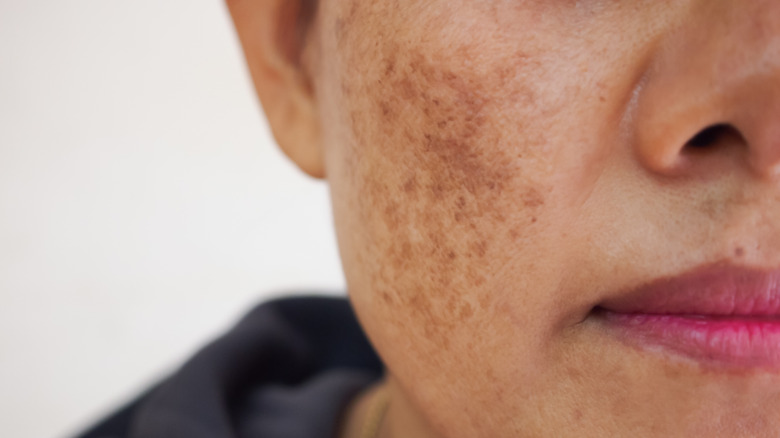Also known as the sunshine vitamin, this nutrient plays a key role in immune function and overall health.
It also helps your body absorb and process calcium, leading to stronger bones.
Most people are aware that maintaining adequate vitamin D levels is crucial for bone growth and development.

What you may not know is that vitamin D promotes skin health, too.
Moreover,low vitamin D levelsmay contribute to the onset of skin cancer, reports the above review.
Your body produces this nutrient when exposed to sunlight.

However, this doesn’t mean that you gotta spend hours in the sun to reap the benefits.
The sunshine vitamin also protects against inflammation and regulates cell growth.
As you probably know, inflammation and acne go hand in hand.

As the scientists note, acne-related inflammation manifests itself as papules, pustules, and small blemishes called microcomedones.
The latter are invisible to the naked eye and tend to occur in the early stages of acne.
Due to its anti-inflammatory effects, vitamin D may help prevent and reduceacne breakouts.

Nearly half of all subjects with acne were deficient in this fat-soluble nutrient.
As the researchers point out, vitamin D not only fights inflammation but also protects against acne-causing bacteria.
Over time, your skin may lose its elasticity and develop deep creases, warns theCanadian Dermatology Association.
Current research indicates that vitamin D may prevent photodamage and reduce photoaging (via theJournal of Advanced Research).
The sunshine vitamin may protect against inflammatory skin diseases, too.
Researchers attribute these potential benefits to its anti-inflammatory and immunomodulating effects.
However, these guidelines vary among health organizations.
If you’re not surehow much vitamin D you needfor healthy skin, discuss your options with a dermatologist.
Vitamin D can be obtained from food or supplements.
Salmon, trout, fortified milk, and soy milk are rich in vitamin D, too.
Since vitamin D is fat-soluble, it’s best to take it with fatty foods for maximum absorption.